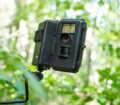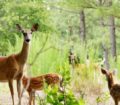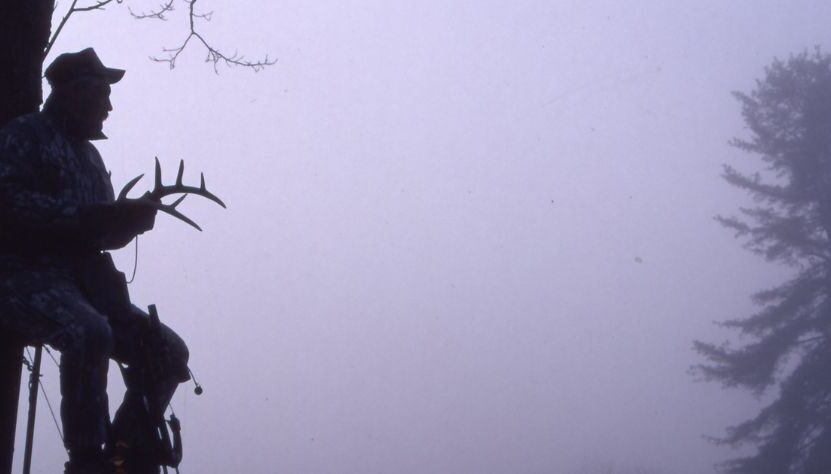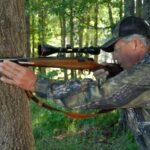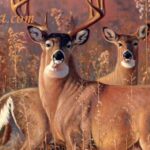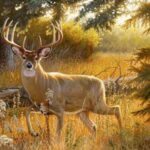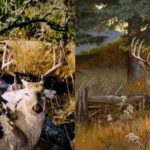Editor’s Note: A deer hunter who consistently takes big bucks has to know those trophy bucks’ thoughts and determine what the buck will do before he does it. White-tailed deer more than 2-1/2-years old have gone to school on deer hunters. They’ve studied the hunters’ habits and schedules and have become masters of hunter evasion. “We had a group of wildlife biologists and deer hunters hunting a certain piece of property for several years and studying the deer there,” Dr. Grant Woods of Reedsville, Missouri, one of the nation’s top deer researchers, says. Woods’ team of wildlife biologists and deer hunters had set-up hunting areas in grids to determine who hunted where over several years. “We learned that deer set-up travel corridors to avoid places where the team was hunting. These deer managed to outsmart these trained wildlife biologists and some of the best deer hunters anywhere.” The older the buck, the less likely that you’ll locate him where you expect to see him, if that’s where all other hunters hunt. A hunter needs to understand the effects of hunting pressure and learn where a buck retreats when he experiences that hunting pressure.

Many hunters believe the more a deer sees or smells humans, the less likely that the animal will appear in the woods during daylight hours. However, Bob Foulkrod, a nationally-known bowhunter from Troy, Pennsylvania, believes the intent of the human helps determine the fear factor of the buck. “If a buck is in a non-pressure situation where he sees hikers, blueberry pickers or photographers during the summer months, he may run on first sighting the human before turning to see if he’s being pursued,” Foulkrod reports. “When he realizes he isn’t being chased or shot at, then he can take a lot of human pressure. But after hunting season opens, and the bucks know that every time they come in contact with humans they’ll be pursued, only a little pressure will put a buck into his nocturnal state, especially if he’s a 2-1/2 or a 3-1/2 year-old deer.”
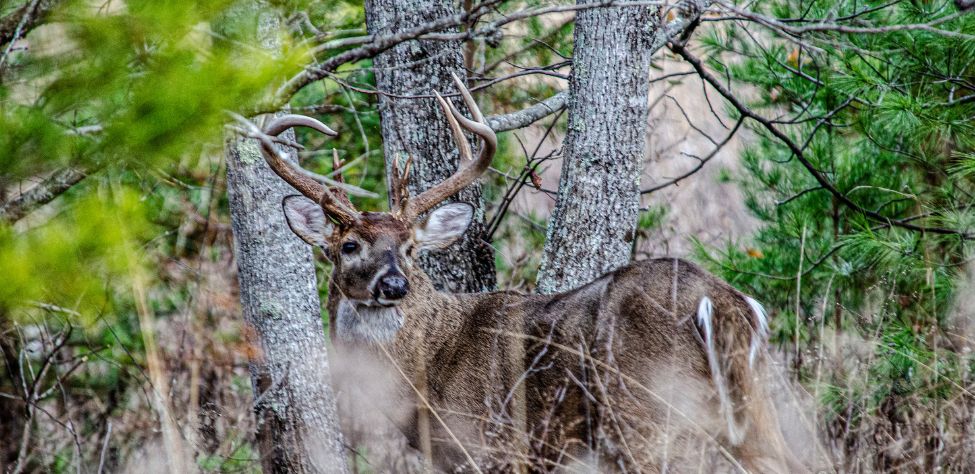
Dr. Keith Causey, a retired professor of wildlife science from Auburn University in Auburn, Alabama, agrees with Foulkrod as he states that, “Since deer are individuals, determining how much hunting pressure one deer can withstand and using that information to draw a conclusion about all deer is impossible. However, from the harvest data I’ve seen, when a buck is 3-years old or older and experiences intense hunting pressure, then he becomes reclusive in his behavior and almost impossible to harvest legally because of his nocturnal activity.”


How to Hunt and Take Big Buck Deer on Small Properties
In this book, you’ll hear from 14 hunters who either have gained permission or leased properties as small as six acres to as much as 250 acres, and how they consistently take older-age-class bucks off these little lands.
VERSIONS: AUDIBLE, KINDLE & PRINT

Jim Crumley’s Secrets of Bowhunting Deer
Using a black magic marker and a gray work jumpsuit, Jim Crumley of Buchanan, Virginia, drastically changed the nature and purpose of hunting camouflage when he created the first sportsman’s camouflage – Trebark. Crumley’s love of bowhunting and his desire to be more invisible changed hunting clothing forever.
In this hunting guide, he shares the wisdom that he’s learned throughout his lifetime about how to be a hunter, how to find a deer lease, how to scout for deer, and more.
Special features include how to:
- Have a magic 60 acres to hunt
- Decide the best equipment to use
- Find deer year-round
- Locate land to hunt
- Know the best place to put your tree stand
- Get bucks within bow range
VERSIONS: AUDIBLE, KINDLE & PRINT

How to Hunt Deer Like a Pro
How do you know if the land you hunt has a trophy deer on it? Wildlife manager Bob Zaiglin, of Uvalde, Texas and Jim Crumley, the father of modern-day hunting camouflage, tells you how to find out. GPS can make finding and taking that trophy buck easier. This hunting guide will teach you how to hunt big bucks where no one else can find them, how to call deer, and how to become versatile as a deer hunter, so that if one deer tactic doesn’t work, another one will.
In the chapter, “How to find Bucks at Scrape,” Dr. Keith Causey, retired professor of Wildlife Science at Auburn University, describes the best way to hunt a scrape.
Brad Harrison of Neosho, Missouri, is a nationally-known videographer, professional deer hunter and master at calling deer. Another master is Will Primos of Primos Game Calls. These two experts will tell the best deer calls and when to use them in this book.
And for over 20 years, Bo Pitman, lodge manager of White Oak Plantation, has been studying deer movement patterns. He explains what types of conditions are best for predicting deer movement.
VERSIONS: AUDIBLE, KINDLE & PRINT

Deer hunting and deer hunters are drastically changing each year. To learn new techniques for hunting deer and have more places to hunt, I’ve interviewed some of the best deer hunters in the nation and share their tactics in How to Hunt Deer Like a Pro: Volume II.
In Chapter 10, Jacob Lamar tells you his tactics for consistently taking older-age-class bucks on public lands in several states. Chapter 11, Bob Walker explains how to find places on public lands where you can hunt that 99 percent of the other hunters never have considered hunting. The Bonus Chapter with David Ramey tells you how, where, when and with what equipment to take big Kansas bucks on public lands by hunting in 100-degree weather when others won’t hunt.
Chapter 13, Mark Drury, his family and his guests take mature bucks every season by having more small places to hunt rather than one large property. Drury explains the strategy of having satellite farms to hunt that only may be 50-150 acres each or less. Chapter 15, Pat Reeve, who hunts far-northern states and Canada, says, “I don’t like hunting for mature bucks until the weather is 20 degrees or less.” Chapter 4, Dr. Larry Marchinton says that funnels are the most-reliable stand sites to hunt for big bucks and tells why.
VERSIONS: AUDIBLE & PRINT
Tomorrow: How Deer Learn to Fear Man

